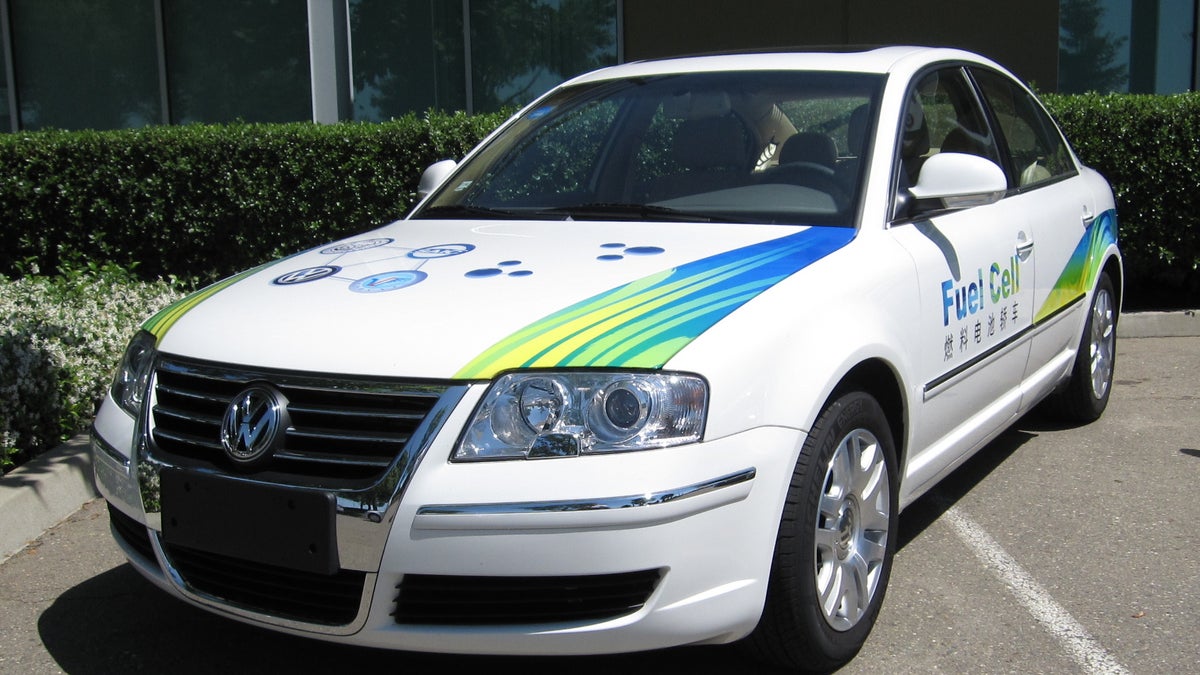Driving the future: VW fuel cell Passat
CNET Car Tech gets a chance to drive the hydrogen fuel cell VW Passat.

If you watched the Olympics in Beijing, you may have noticed Volkswagen Passats being used as pace cars for some of the running and cycling competitions. More than just product placement, these Passats demonstrated a hydrogen fuel cell power train built by Volkswagen at its China research laboratory. The car is called the Volkswagen Passat Ling Yu hydrogen fuel cell vehicle, and we got a chance to drive it here in California.
Volkswagen brought a number of these cars to the California Fuel Cell Partnership (CFCP), a unique organization that works with major automakers such as Honda, Ford, Toyota, Nissan, Hyundai, and Volkswagen on fuel cell research. CFCP also promotes research into hydrogen generation and filling stations.
So, on a hot Sacramento day, we took the wheel of a car that just might be the future of automotive transportation. As the car is built on the Passat platform, it doesn't exactly look like the car of the future. The controls and ergonomics are all very familiar. But a kilowatt gauge takes the place of a tachometer on the instrument cluster.
Although driven by an electric motor, which doesn't make much sound in itself, the car produced a steady whining sound. Not unpleasant, but certainly noticeable, it came from the compressor used to push hydrogen into the fuel cell. The power-train packaging is similar to that of a gas-engine car, with the fuel cell stack, compressor, and control software under the hood, and hydrogen tanks at the rear axle. The car also has a lithium ion battery in the middle of the chassis, which provides electricity storage for the regenerative brakes and supplements the flow to the motor.
Putting the car in Drive, we quickly found that we had to push the accelerator all the way in to get going. There was also some shuddering when starting off, which the Volkswagen engineer in the car with us explained away as a software glitch. Initial acceleration was slower than we expected, but we suspect that is how the car is programmed; the electric motor should give it strong initial torque, and the fuel cell doesn't need any significant time to wind up its electricity output.
The electric gauge climbed to 40 kilowatts starting off, and stayed up there when we kept our foot down on the accelerator. But the car plateaued in acceleration at about 45 mph, so we backed off on the accelerator and were able to maintain speed while only drawing about 10 kilowatts. That electricity gauge became much more interesting to watch than the speedometer as we drove, as we used it to modulate power. Excessive acceleration caused the car to beep at us, a warning that the fuel cell was being overtaxed.
The car also included a power-flow animation, similar to what you find in hybrids, on the LCD, plus a few screens of diagnostic information. We didn't spend much time monitoring these screens while underway, as the power-flow animation mostly showed electricity going from the fuel cell to the battery and motor.
Pure electric cars have gotten a lot of attention lately, but there is still a strong argument for hydrogen fuel cell vehicles. With current technology, a fuel cell vehicle has much better range than an electric car, as hydrogen tanks take up much less space, and are much lighter, than a large battery pack. Likewise, electric cars tend to be built on very small platforms, as less weight helps optimize range, while automakers have used much larger cars for fuel cell power trains. On another practicality note, hydrogen tanks, even at 10,000 pounds per square inch, can be filled in a matter of minutes, while battery recharge times are much longer--typically four hours from a 220 volt source.
However, electric cars have the advantage of an already-existing infrastructure in place to recharge them. Electric lines run everywhere, so you generally just need to attach a charging station. Hydrogen vehicles would require a whole new infrastructure of filling stations, and either piped or hauled hydrogen, not to mention additional hydrogen generation facilities.

